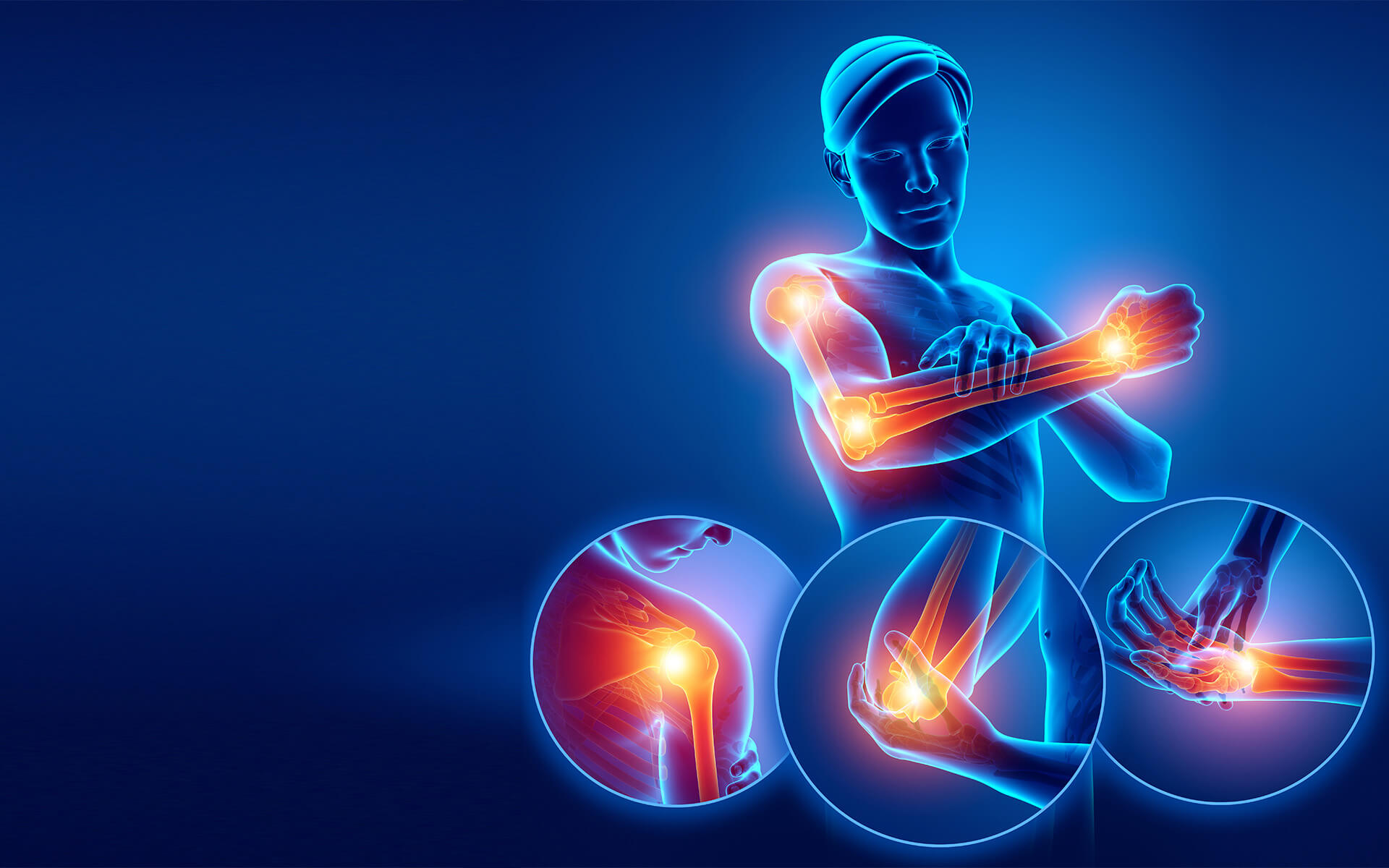Effective Joint Pain Relief Methods for Better Mobility
Joint pain affects millions, limiting daily activities like walking, climbing stairs, or even holding a cup. This widespread issue can stem from arthritis, injuries, or overuse, making effective relief crucial for maintaining mobility and quality of life. Finding safe, evidence-based methods to manage joint pain is essential, whether you're dealing with occasional discomfort or chronic conditions. This article explores a range of joint pain relief methods, including physical therapy, dietary supplements, lifestyle changes, and the role of vitamins in managing inflammation and arthritis. By adopting these strategies, you can regain mobility and live more comfortably.
Understanding Joint Pain and Its Causes
Joint pain arises from various sources, including arthritis (osteoarthritis and rheumatoid), injuries, or repetitive strain from overuse. Osteoarthritis results from cartilage breakdown, while rheumatoid arthritis involves autoimmune inflammation. Symptoms include stiffness, swelling, and reduced range of motion, often worsening with activity or rest.

Risk factors include aging, obesity, a sedentary lifestyle, and genetic predisposition. For instance, excess weight stresses joints, accelerating wear, while inactivity weakens supporting muscles. Early intervention is critical—ignoring symptoms can lead to joint damage or disability. Understanding the cause, through medical evaluation, guides effective treatment and prevents progression.
Physical Therapy for Joint Pain Relief
Physical therapy offers a non-invasive, tailored approach to physical therapy for joint pain relief. It involves exercises designed to strengthen muscles around joints, enhance flexibility, and reduce pain. Benefits include improved mobility, better joint stability, and decreased reliance on medications.

Common techniques include stretching to loosen tight muscles, low-impact aerobics like cycling to boost circulation, and hydrotherapy, where water’s buoyancy eases joint stress. Working with a licensed physical therapist ensures personalized plans, though home exercises like gentle yoga can complement sessions. Regular therapy, even 2-3 times weekly, can significantly improve function, making it a cornerstone of joint pain management.
Read more: 10 Best Practices to Follow to Maintain a Healthy Lifestyle
Best Vitamins and Supplements for Inflammation and Arthritis
Vitamins and supplements play a key role in reducing inflammation and supporting joint health, particularly for arthritis. Best vitamins for inflammation and arthritis include vitamin D, which strengthens bones and reduces inflammation; vitamin C, an antioxidant that supports cartilage; and vitamin E, which combats oxidative stress. Omega-3 fatty acids, found in fish oil, also decrease inflammatory markers. Supplements like glucosamine and chondroitin may rebuild cartilage, while turmeric’s curcumin offers potent anti-inflammatory effects. Consult healthcare providers for safe dosages, as high doses or interactions (e.g., fish oil with blood thinners) can pose risks. Incorporate food sources like salmon, spinach, walnuts, and oranges to naturally boost these nutrients.
Lifestyle Changes for Joint Pain Management
Lifestyle changes are powerful joint pain relief methods that reduce stress on joints and enhance overall health. Weight management is critical—losing even 5-10% of body weight can significantly ease joint pressure, especially in knees and hips. A balanced diet rich in anti-inflammatory foods (e.g., berries, olive oil) supports this.

Low-impact activities like swimming, yoga, or walking maintain joint mobility without strain. Ergonomic adjustments, such as using supportive chairs, proper footwear, or standing desks, minimize joint stress during daily tasks. Additionally, stress reduction through mindfulness or meditation lowers cortisol, which can exacerbate inflammation. Consistent small changes yield lasting relief.
Read more: Understanding Individual Health Insurance: Benefits, Costs, and Smart Choices
Complementary and Alternative Therapies
Complementary therapies provide additional joint pain relief methods for those seeking holistic options. Acupuncture, which involves inserting fine needles at specific points, may reduce pain by stimulating endorphin release. Massage therapy improves circulation, relaxes muscles, and eases stiffness. Heat therapy soothes aching joints, while cold therapy reduces swelling. These methods offer relaxation and improved function, though evidence varies—acupuncture shows promise for osteoarthritis, but benefits depend on individual response. Consult trained professionals to ensure safety, especially with conditions like rheumatoid arthritis. Accessible options include local clinics or at-home tools like heating pads or ice packs, making these therapies practical for many.
When to Seek Medical Intervention
Persistent or severe joint pain warrants medical attention. Signs include ongoing pain, significant swelling, joint deformity, or inability to perform daily tasks. Rheumatologists or orthopedists may recommend prescription medications like anti-inflammatories, corticosteroid injections to reduce inflammation, or, in severe cases, surgery like joint replacement. A personalized treatment plan, combining medical interventions with physical therapy or supplements, optimizes outcomes. For example, post-surgical physical therapy accelerates recovery, while anti-inflammatory vitamins support long-term joint health. Early consultation prevents complications, ensuring pain doesn’t dictate your life. Always discuss symptoms openly with doctors to tailor interventions to your needs.
Conclusion
Joint pain doesn’t have to limit your life. Through joint pain relief methods like physical therapy, anti-inflammatory vitamins, lifestyle changes, and complementary therapies, you can reduce discomfort and improve mobility. Proactive steps—starting with a healthcare provider’s guidance—empower you to manage arthritis or injury effectively. Begin with physical therapy to strengthen joints, explore supplements like glucosamine or turmeric, and adopt low-impact activities like yoga. These evidence-based strategies enhance quality of life, helping you move freely. Take action today: consult a doctor, start a tailored plan, and reclaim your mobility with confidence.
DEALS DELIVERED TO YOUR INBOX.
Subscribe now for top-notch shopping & Investing advice. Receive hot Vouchers into your wallet
By submitting your information you agree to the Terms & Conditions and Privacy Policy
Related Articles

Hooked on Style: Why the Fisherman Aesthetic Is the Next Big Thing in Men’s Fashion

Review: Best Shipping Solutions for E-commerce Businesses

Christmas Movie Night: Save Big with Coupons and Deals

Del Sol Design Decoupage Christmas Ornament Class (Today • 10:00 AM, 39659 Horse Run Dr, From $20.00)

25+ Timeless and Low Maintenance Hairstyles for over 70 Year Old Women

Hacks to Find Great Deals When Shopping Online: Tips and Examples
Popular Brands
View all
Voilà AI
5 Coupons Available

Ryze Trading
5 Coupons Available

Pivot Point
4 Coupons Available

CHEQ Essentials
5 Coupons Available

The College of Functional Wellness
5 Coupons Available

AIAssistant.so
5 Coupons Available
Popular Articles
View all.png)
Delicious Journey: Unwrapping the Magic and Flavor of Christmas Oreo Balls

Cherry Bomb: Unleashing the Power of Cherry Red Lipstick

15+ Trendy Halloween Costumes for Women: Unleash Your Inner Character

Emergency vs. Non-Emergency: Choosing the Right Hospital for Your Needs

Team Jambalaya Cook-Off - Team Building (Today • 10:00 AM, Location Provided After Booking, Check Ticket Price)
.png)
Mango Smoothie: A Tropical Delight for Every Season
LATEST

Last updated: Jul 7, 2025

Last updated: Dec 6, 2025

Last updated: Jun 19, 2025

Last updated: May 21, 2025

Last updated: Sep 12, 2025

Last updated: Jun 30, 2025
